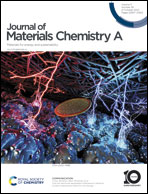Reinforcement learning-based design of shape-changing metamaterials†
Abstract
During the last decade, artificially architected materials have been designed to obtain properties unreachable by naturally occurring materials, whose properties are determined by their atomic structure and chemical composition. In this work, we implement a new reinforcement learning (RL) method able to rationally design unique metamaterial structures at the nano-, micro-, and macroscale, which change shape during operational conditions. As an example, we apply this method to design nanostructured silicon anodes for Li-ion batteries (LIBs). The RL model is designed to apply different actions and predict change during operational conditions. The multi-component reward function comprises an increase in the total storage capacity of the resulting battery electrode and structural parameters, such as the minimum distance between the individual components of the nanostructure. Upon experimental validation using a polymer-based 3D printing technique, we expect that the newly discovered structures improve the current Si-based LIB anodes state-of-the-art by almost three times and almost ten times the current commercial LIB based on a graphitic anode. This RL-based optimization method opens up vast design space for other responsive metamaterials with tailored properties and pre-programmed structural transformation.

- This article is part of the themed collections: Advancing energy-materials through high-throughput experiments and computation and #MyFirstJMCA


 Please wait while we load your content...
Please wait while we load your content...